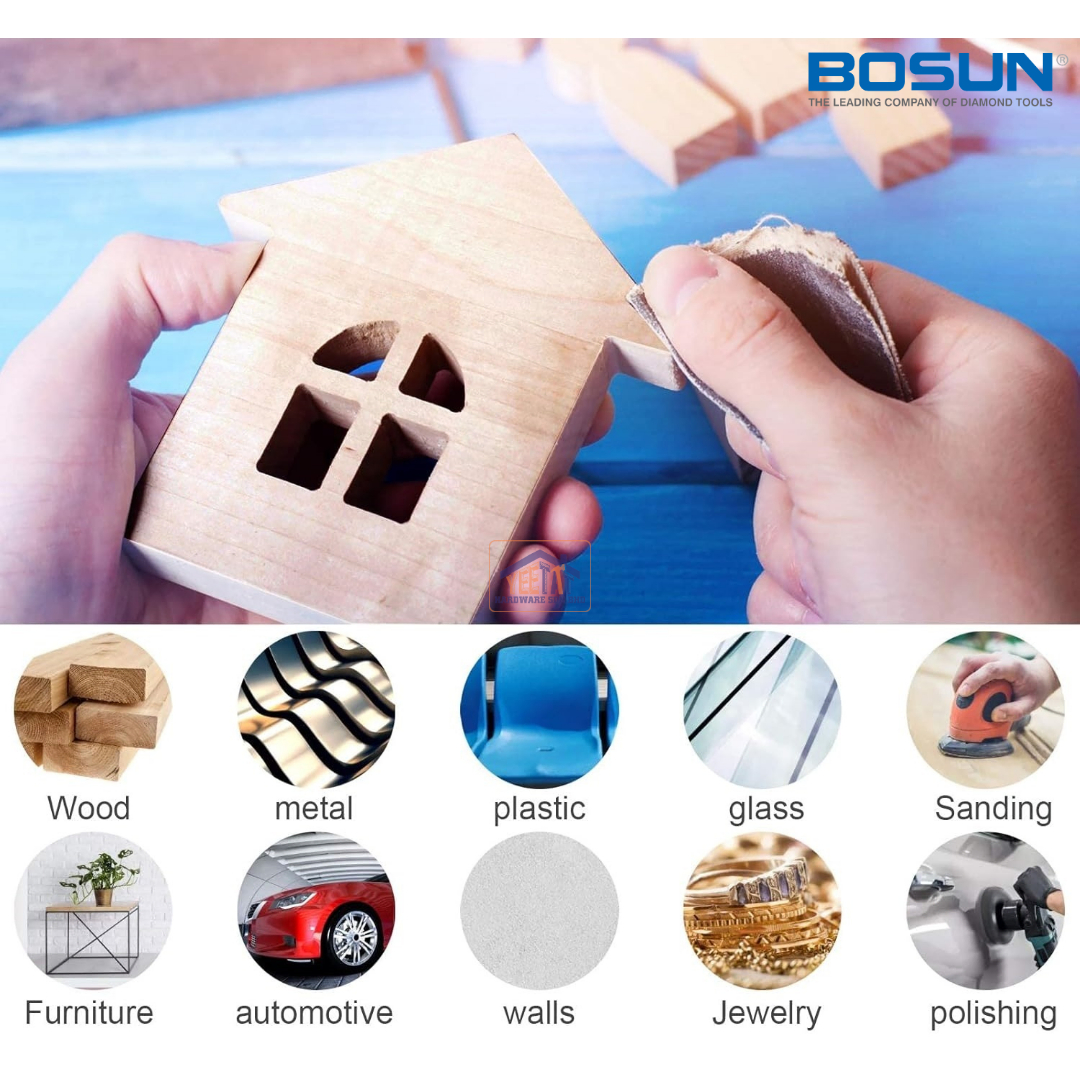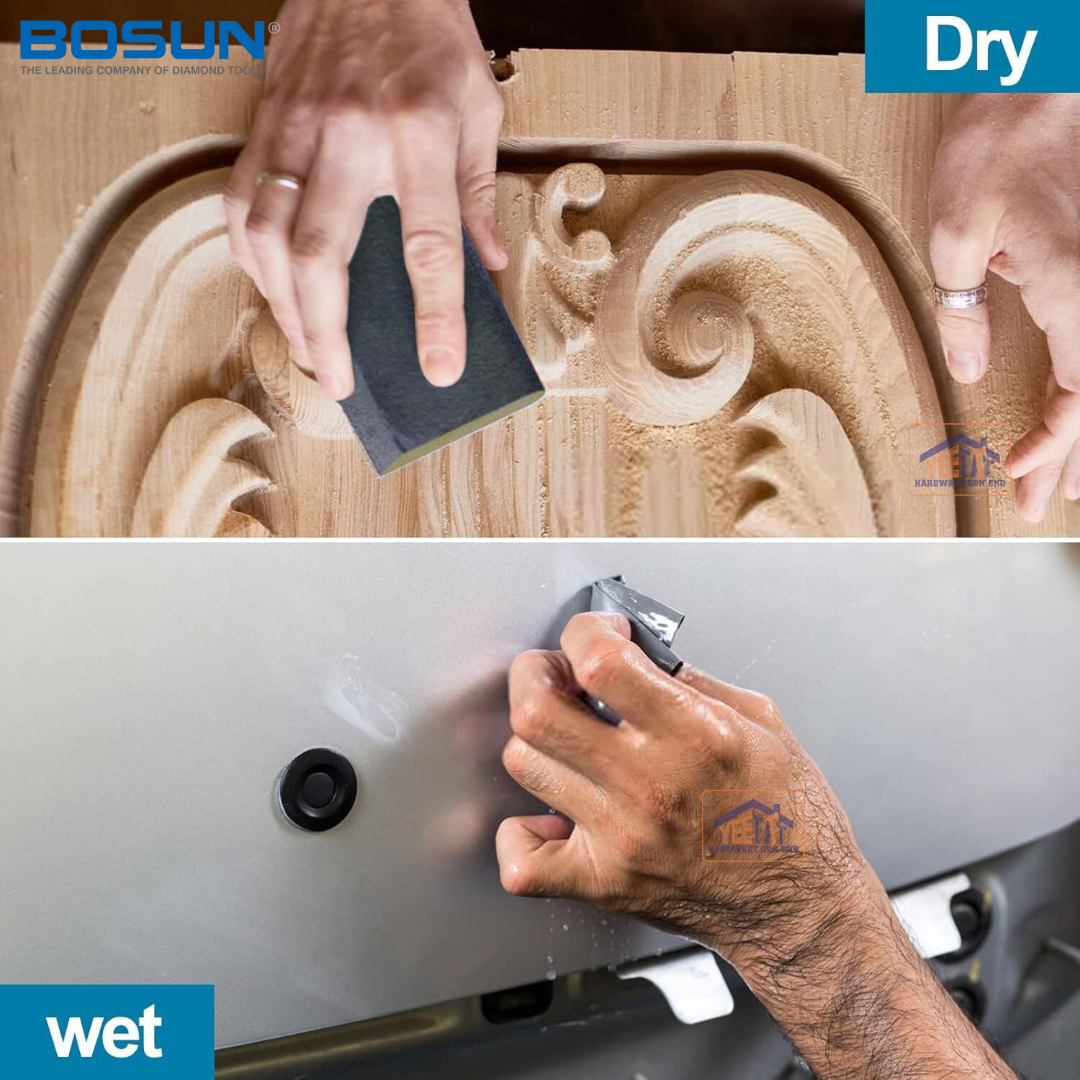Sandpaper and glasspaper are names used for a type of coated abrasive that consists of sheets of paper or cloth with abrasive material glued to one face. Despite the use of the names neither sand nor glass are now used in the manufacture of these products as they have been replaced by other abrasives such as aluminium oxide or silicon carbide. Sandpaper is produced in a range of grit sizes and is used to remove material from surfaces, either to make them smoother (for example, in painting and wood finishing), to remove a layer of material (such as old paint), or sometimes to make the surface rougher (for example, as a preparation for gluing). It is common to use the name of the abrasive when describing the paper, e.g. "aluminium oxide paper", or "silicon carbide paper".
The grit size of sandpaper is usually stated as a number that is inversely related to the particle size. A small number such as 20 or 40 indicates a coarse grit, while a large number such as 1500 indicates a fine grit
Features And Benefits
- Recommended for automotive use as well as general household applications on a wide variety of materials. It can achieve a unique finish in wet applications and provides superior cutting power that reduces working times and facilitates sanding operations.
- Its closed structure guarantees fast sanding and a long lifespan. It has a very flexible backing that easily adapts to any surface. Sandpaper granule thickness is printed on the back for easy identification.
- Uses fewer sheets, with less waste and less effort. Easy to lay on any curved surface, it can be applied to any form of electric sander. Due to its structure, it is resistant to clogging so it can be used over and over again.










